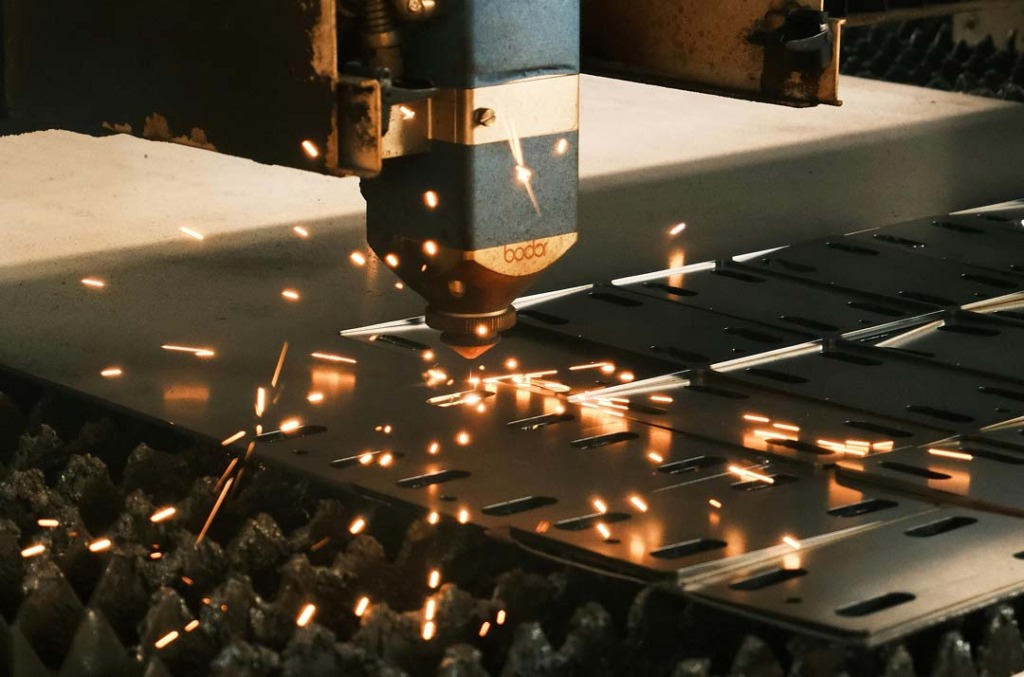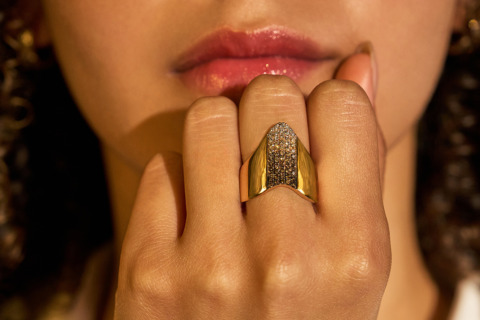Whether you’re in the market for a new piece of jewelry or just curious about the sustainability credentials of natural diamonds versus laboratory-grown diamonds (LGDs), you’re in the right place.
The topic of sustainability and diamonds is a pretty weighty one, with plenty of conflicting – and often confusing – information.
LGDs, for example, are often touted as the ‘more sustainable’ choice, but the reality is a little more complex. Here, we’ll break down the facts behind lab grown vs natural diamond choices, what a more sustainably sourced diamond looks like and how the natural diamond industry is stepping up in a major way.
It’s also worth bearing in mind that the topic of sustainability and diamonds is a whole different ballgame to ethically-sourced diamonds – the latter prioritizes human rights and fairness, while sustainability focusses on conservation efforts to protect the environment. But we’ll get to all that shortly…
What does sustainability mean when it comes to diamonds?
The simple answer? When you buy more sustainable diamonds, you’re choosing a more environmentally responsible option – one that seeks to prioritize environmental protection and resource conservation (looking after our planet, basically!).
It means the people creating or sourcing the diamond have the utmost respect for the planet and its people. So that usually involves things like cutting down on carbon emissions, embracing renewable energy, and making sure that people and the planet benefit wherever possible. From re-wilding programs to preserving biodiversity, the aim of the game is for the impact on Earth to be as minimal and respectful as possible.
One of the most exciting recent shifts in diamond sustainability initiatives is traceability. Traceability means being able to trace a diamond’s provenance and journey from its source right to your jewelry box; knowing which country it originated from, which mine it was recovered from, and where it was cut or polished.
As you’d imagine, knowing this information is something of a game-changer, since transparency around where a diamond comes from – and the conditions it was recovered or made in – helps us choose diamonds linked to more positive environmental initiatives and responsible mining practices.
How lab-grown and natural diamonds impact our planet
The impact of lab-grown diamonds
As we mentioned earlier, LGDs – diamonds produced in factories or labs – are often touted as the ‘sustainable’ choice since they’re not directly mined from the ground. But, producing a gemstone in a matter of weeks (that would otherwise naturally take millions or billions of years) requires a ton of energy.

For starters, large amounts of electricity powered by fossil fuels such as coal are needed to power machinery and create the conditions in which LGDs are made (either using chemical vapor processes, or high pressure and temperatures). Carbon emissions are usually unmonitored too, which can lead to chemical contamination of the water used during this super-fast diamond turnaround.
And demand-driven LGDs can be tough on the environment in other ways – the marketing of ‘eco-friendly’ LGDs was actually called into question by the Federal Trade Commission in 2019, as some of their sustainability claims can’t always be substantiated. For example, most LGDs are produced in India and China1, where the majority of facilities don’t use sustainable energy sources. On top of that, other mined materials like iron, nickel and cobalt are usually part of the process, meaning LGDs aren’t technically ‘mining-free’ gems either.
Sadly, despite the energy-heavy nature of LGD production, efforts to cut down on things like greenhouse gases and their carbon footprint have been pretty limited across the industry, which is why talk of ‘sustainable’ or ‘planet-friendly’ LGDs shouldn’t be taken at face value. It’s important to do your own research into the provenance of any LGD, just as much as you should with a natural diamond.
The impact of natural diamonds
Traditionally, natural diamond recovery uses a lot of energy, granted. But here’s the thing: in recent years plenty of diamond companies have seriously stepped up their game, putting in real effort (not to mention resource) into protecting the environment and ensuring their mining practices are held to higher sustainability standards.
We’re talking wildlife conservation projects, land rehabilitation and long-term plans and commitments to make things as sustainable as they can possibly be. And it’s not just about the land; local communities can benefit hugely too. A large proportion of the rough diamond value typically stays local, supporting employment, businesses2 and the families living in the region, as well as benefitting systems like schools, healthcare and local infrastructure, with workers protected by strict labor regulations.
Ever heard of the Kimberley Process Certification Scheme3 (KPCS)? Named after the South African city it originated in, it’s an initiative set up to stop any rough diamonds being traded to fund warfare.
Initially focusing on countries like Sierra Leone, Angola and the Democratic Republic of the Congo, the KPCS now includes over 80 participating countries. It requires strict documentation and the tracking of diamonds to ensure they’re conflict-free all the way from mine to market.


Why sustainability matters when choosing a diamond
While natural diamond recovery isn’t completely impact-free, with responsible practices and real, genuine accountability, the natural diamond industry is proving that luxury and sustainability commitments really can go hand-in-hand. After all, we’re not just looking for sparkle when we shop for diamonds – we want a diamond that reflects our core values which can leave a positive mark on the world.
Supporting natural diamonds means investing in more than just a pretty piece of jewelry. It’s about backing ethical trade, uplifting communities, protecting ecosystems and owning a piece of the Earth’s history with deep sentimental and more sustainable value.
While LGDs may seem like the simpler or more affordable choice, many can still lack transparency around their environmental credentials, and can’t deliver the same level of meaningful impact that natural diamonds from a responsible company can.
The take-home? Whether you opt for a natural diamond or an LGD, it’s worth doing your homework to ensure the values of its supplier sit just as pretty with you as your jewelry does.



